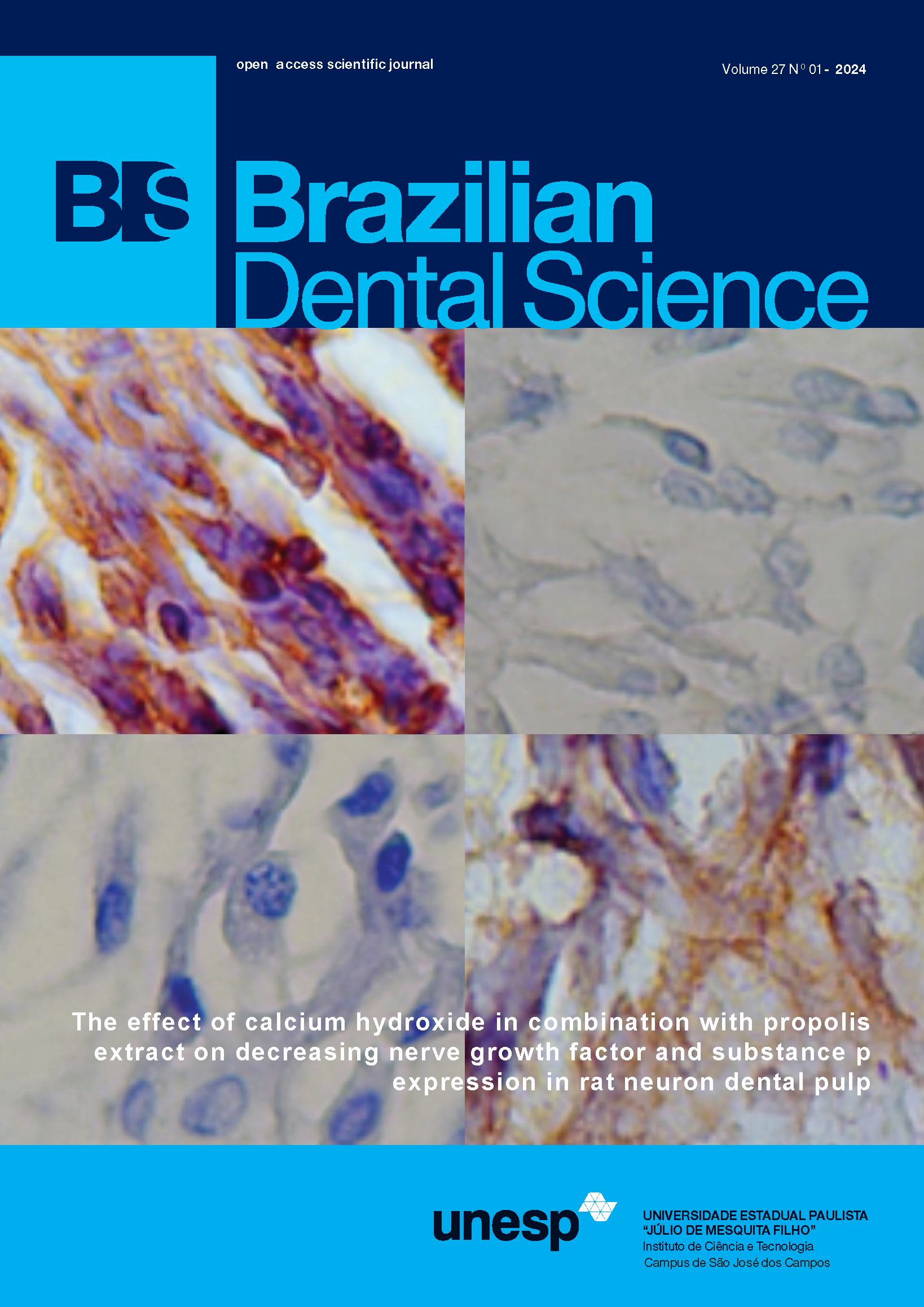Clinical longevity of metallic versus fiberglass intraradicular posts: a systematic review
DOI:
https://doi.org/10.4322/bds.2024.e4114Abstract
Objective: This systematic review aims to compare the clinical longevity of metallic and fiberglass intraradicular posts in teeth with severely compromised crowns, utilizing randomized clinical trials and case reports published in the last eleven years. Material and Methods: The research was conducted on PubMed, Medline, Lilacs, and BBO databases using the first search strategy with the descriptors ‘dental posts,’ ‘longevity,’ ‘fiberglass-reinforced posts’ or ‘metallic posts.’ The second search strategy involved analyzing the references of articles identified by the first search. Both studies were carried out with stringent inclusion and exclusion criteria. Results: No statistically significant and clinically relevant differences in longevity were observed between metallic and fiberglass posts. Conclusion: The clinical success and durability of the restorative procedure using intraradicular posts primarily depend on the remaining amount around the post (ferrule), the type and position of the tooth in the arch (impacting the masticatory forces exerted on the restored tooth), and the correct application of the cementation technique. It is noteworthy that fiberglass posts offer substantial advantages by presenting a modulus of elasticity similar to dental structure, ensuring a more homogeneous distribution of masticatory forces and reducing the risk of fractures. These findings have practical implications for material selection in restorative procedures involving intraradicular posts.
KEYWORDS
Dental materials; Dental post; Fiberglass posts; Longevity; Post and core technique.
Downloads
Published
How to Cite
Issue
Section
License
Brazilian Dental Science uses the Creative Commons (CC-BY 4.0) license, thus preserving the integrity of articles in an open access environment. The journal allows the author to retain publishing rights without restrictions.
=================




























